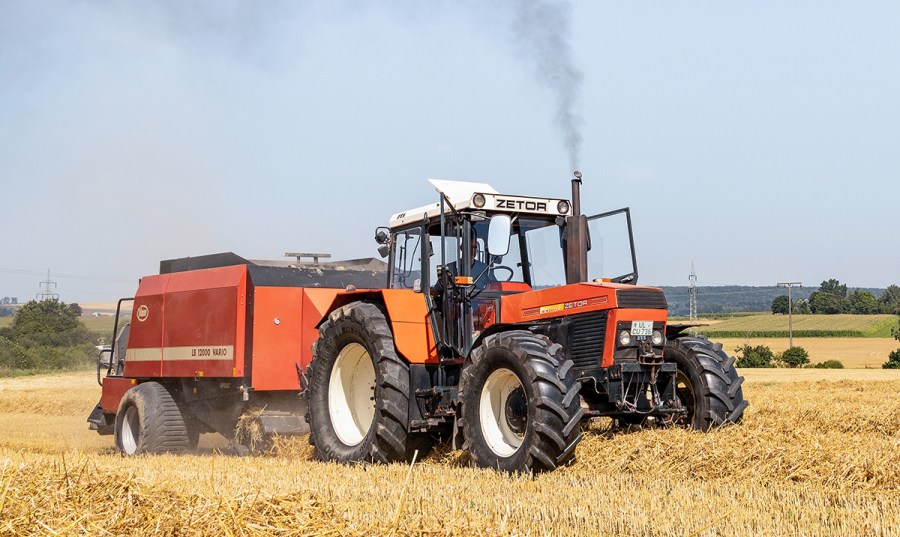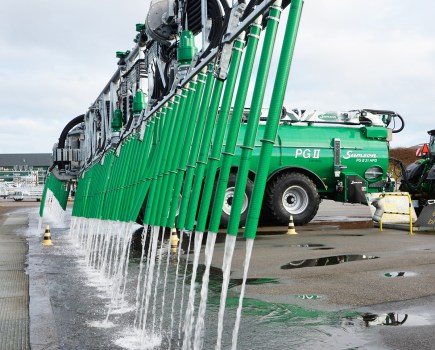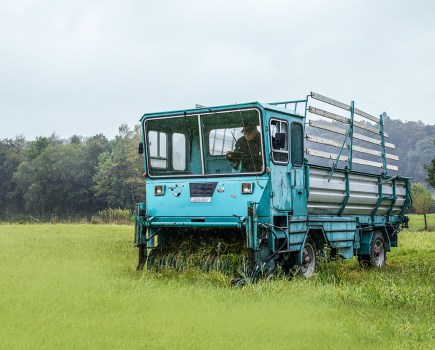160hp for around 55,000 Deutchmark, or a little over £22,000. Back in 1994, the Zetor ZTS 16245 had one very compelling argument — its price. Thirty years on, we catch up with one these Slovakian-built classics.
KEEPING IT BRIEF
- The price of a new Zetor ZTS 16245 was about a third of what you would expect to pay for other 160hp tractors.
- The six-cylinder Martin engine from Slovakia delivers around 118kW/160hp.
- Thirty years later, and the Slovakian power house is still going strong.
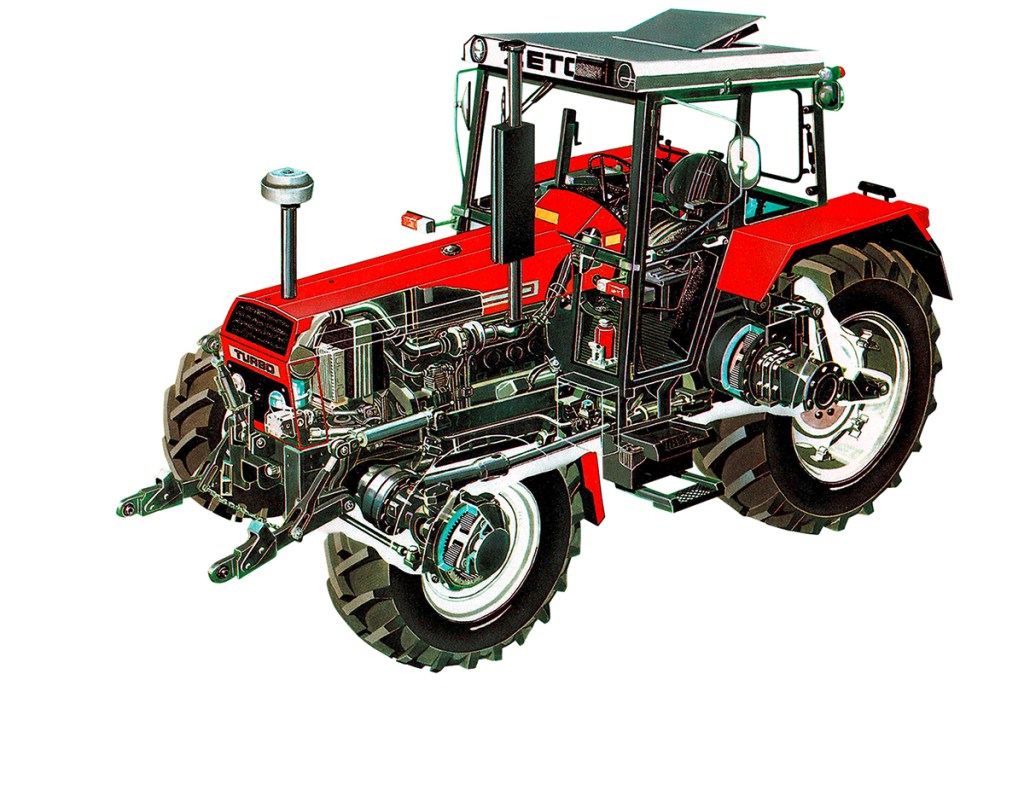

A one-owner classic is always very interesting to hear about, even if that classic is not one of the ‘big names’ such as MB trac, Ford, John Deere or even a Deutz-Fahr. In the case of the pictured Zetor ZTS 16245 model, the first owner goes by the name of Alexander Eberhardt — well almost, because it was his father who actually bought the tractor fresh out of the box back in 1994. But let’s start at the beginning.
Declaring a price war
In 1994, when the Eberhardt family’s dairy farm, located on the southern edge of Germany, was planning to replace their ageing John Deere 4240, they discovered an advert within the weekly paper where a dealer was offering Czech tractors at very competitive prices.
The general rule of thumb around this period was that every pony under the bonnet would set you back 1,000 Deutschmark; however, this 160hp tractor was advertised for as little as 55,000 Deutschmark — a real killer price that was even better than that of many used machines being offered.
“We were easily able to get a tractor for an on-farm demonstration back then,” recalls the 51-year-old, “and we were impressed by the price, the simple technology and the powerful engine.”
A fully trained HGV mechanic, Alexander Eberhardt was not afraid of potential repairs even with the Zetor dealership being quite a few kilometres away.
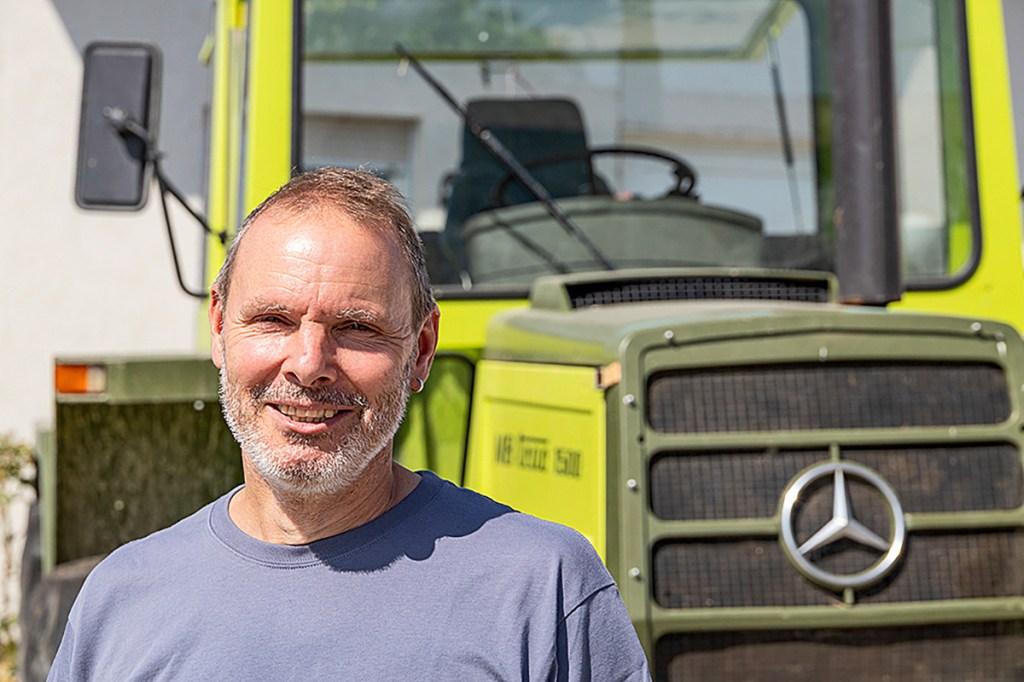
“Indeed, we did have to repair the tractor from time to time,” he admits. “Yet thanks to the simple design and the excellent availability of spare parts, it’s easy to do.” While the large Zetors are an exception in Germany, they have been very popular in the former Eastern Bloc countries.
“You can order a clutch plate for €50 today and it’ll be there the next morning,” says the farmer, still pleased with the ease of repair. “I have a spare parts book where even the diodes on the alternator are listed as individual items.”

What does ZTS stand for?
Before we delve deeper into the details of the machine, let’s say a few words about the Zetor ZTS brand. The Zetor name is closely associated with Brno in the Czech Republic, but in the former Czechoslovakia it was not the only tractor manufacturer.
At the time, ZTS was also manufacturing tractors in the Slovakian town of Martin. In fact, its large six-cylinder tractor models were developed by Zetor in the 1980s, but the production was transferred to ZTS — allegedly for political reasons. This is where the further development took place — the ZTS 16245 is part of the third generation of heavy six-cylinder tractors.
In Germany, for the sake of simplicity, the tractors were sold under the double name Zetor ZTS through the same dealer network. The 16245 owned by the Eberhardts bears only the Zetor decal.
Thrust instead of shifting
But let’s take a closer look at the ZTS 16245 Turbo. This is a mix of various components sourced from several former Eastern Bloc countries. The rear axle came from Ursus (ZPC) in Poland and the front axle from UTB in Romania. As in other areas, one reason for the lower price tag is evident here: the off-centre drive to the front axle results in two different turning circles — 7.07m to the right and more than 8.07m to the left. The simple gearbox comes from Czechoslovakia and is shifted by operating a mechanical single-disc clutch: two ranges, three speeds and one splitter step.
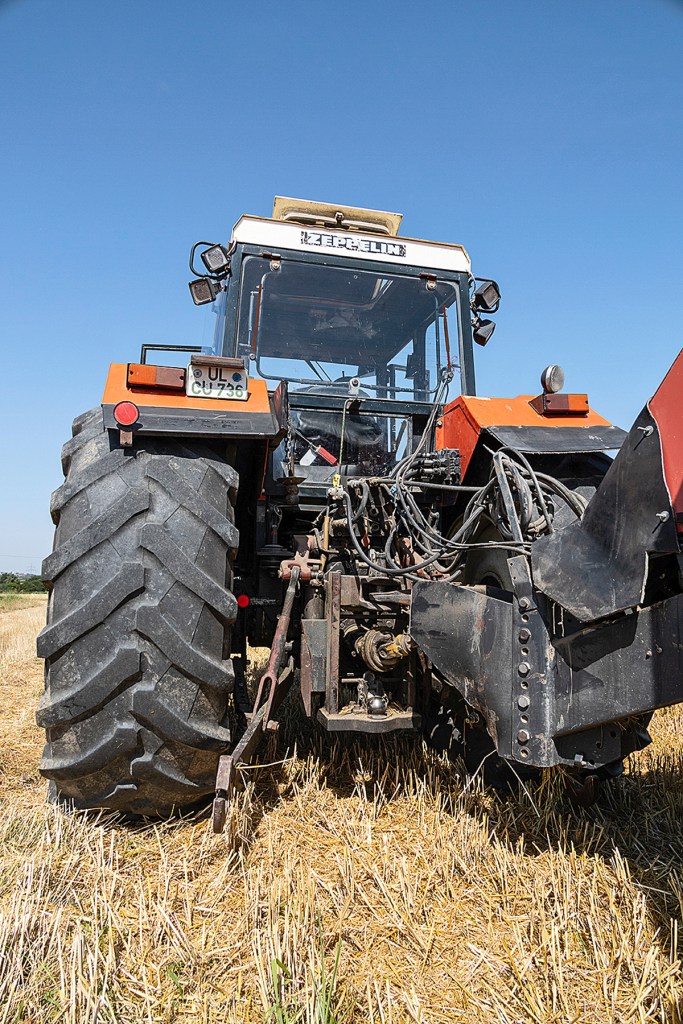
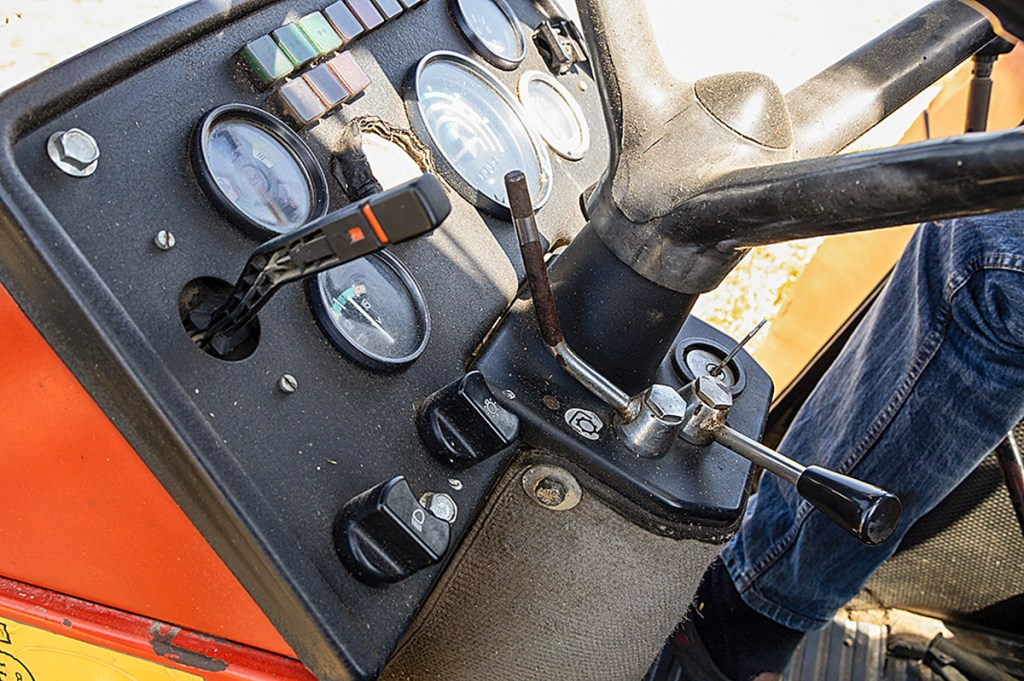
“But I don’t usually have to change gears much because the ZTS engine has a lot of torque,” says Alexander happily. And there is another thing that excites the friendly German. Even after it has been stood idle for months over winter, the Zetor starts up first time when you turn the ignition key, he adds.
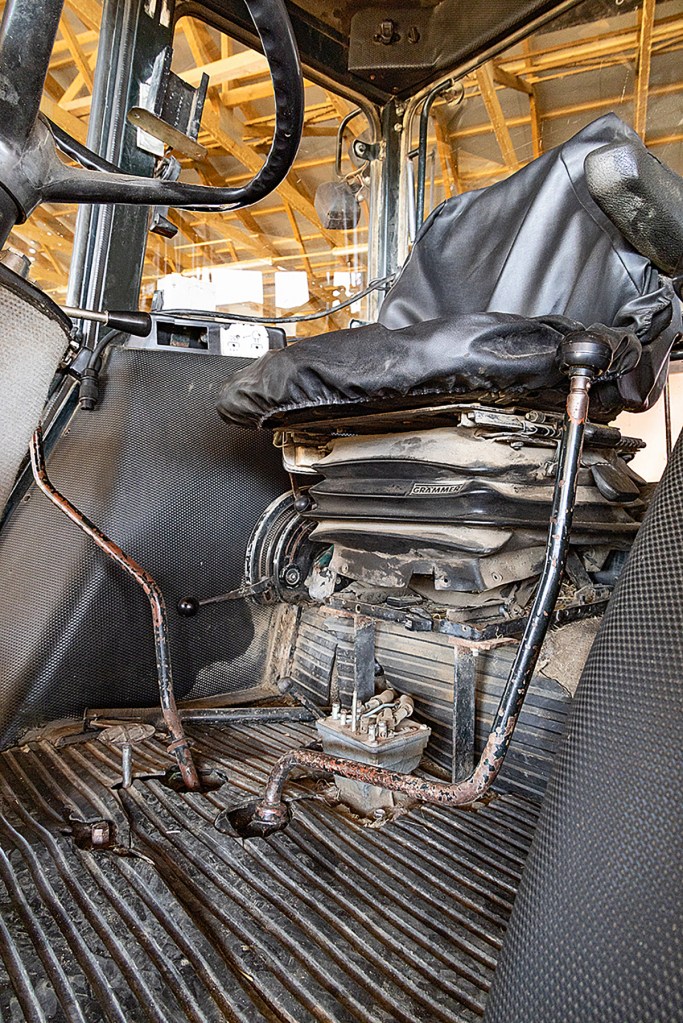
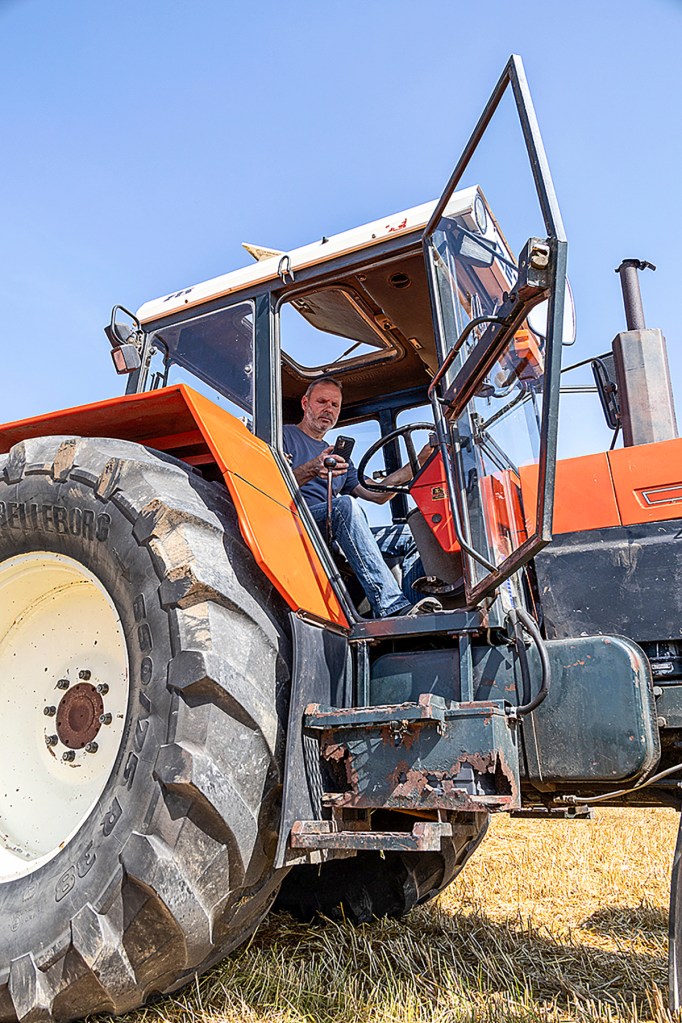
In the 1992 profi tractor test, the six-cyl, 6.8-litre engine — albeit without a turbo in the 12245 — didn’t turn out to be one of the most economical engines. But even then it proved to have decent pulling power, even in the low rev range.

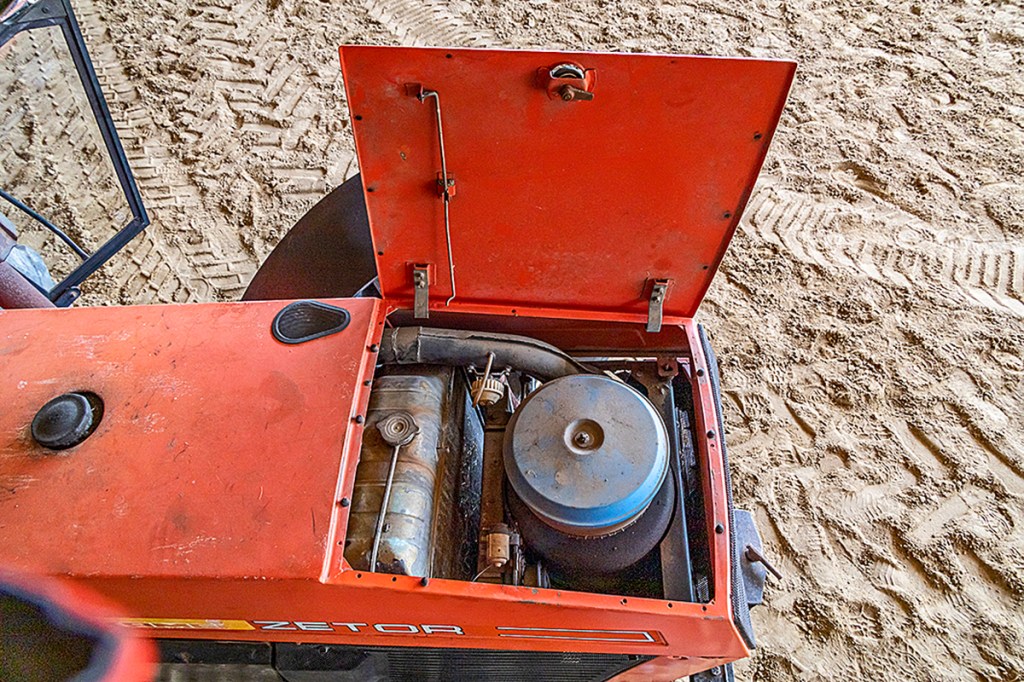
An eighties feel
The large cab is — as expected — spartan. “The level of comfort is limited,” explains Alexander, “but many tractors from the 1980s didn’t offer much more.” The clutch in his MB trac 1500 is no easier to operate, and it certainly doesn’t have a splitter gear.
“And not every tractor had the power-shift pto with 540 and 1,000rpm back then.” When the Eberhardt family bought the 16245, the machine was actually oversized, so the four-furrow plough or the 3.0m cultivator rarely challenged its full potential. Today, the tractor puts in fewer hours than before, but the square baler is still a worthy rival. Here, the Zetor also scores with its high ground clearance of almost 50cm — also courtesy of the large tyres. Today, it is clad with the biggest tyre size available — 480/70 R28 fronts but 650/75 R38 rears. “This means it can now run at almost 38km/hr,” comments Alexander happily.

Summary
If you like to head off-piste, as they say, the Zetor ZTS 16245 does have a certain appeal. But you will have to hunt hard to find one of these tractors. You need to be patient.
The tractor still clocks up around 250 hours on Alexander Eberhardt’s 45ha farm every year. The tractor may not be a collector’s item to many and sometimes has to spend the night outside, yet the top model from Slovakia is still a sight to behold. And as for the sound. Well, that’s rather nice, too.
Lucas Colsman
For more up-to-date farming news click here and subscribe now to profi and save.

